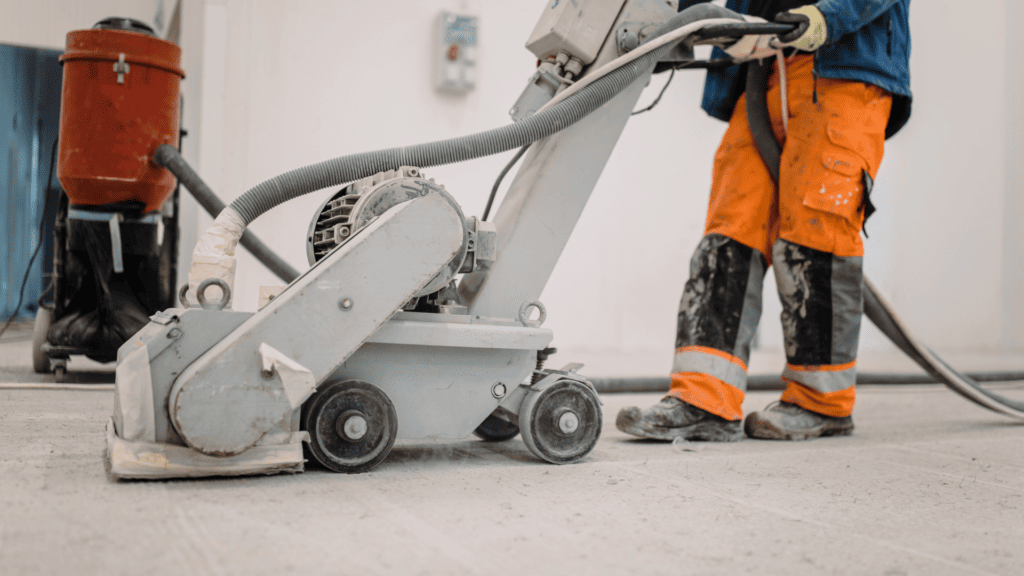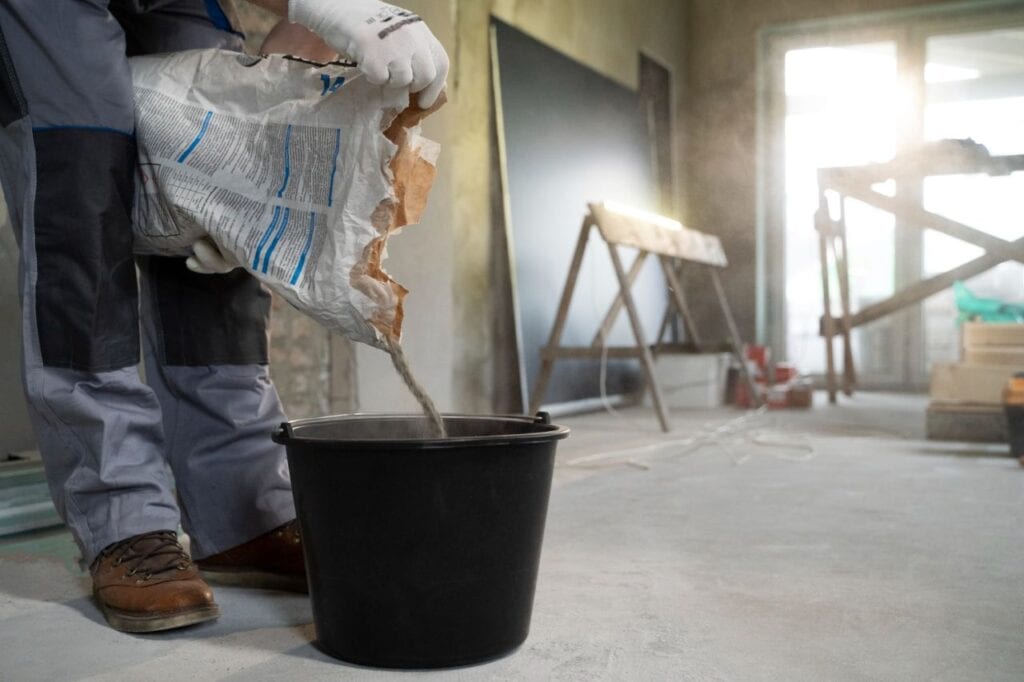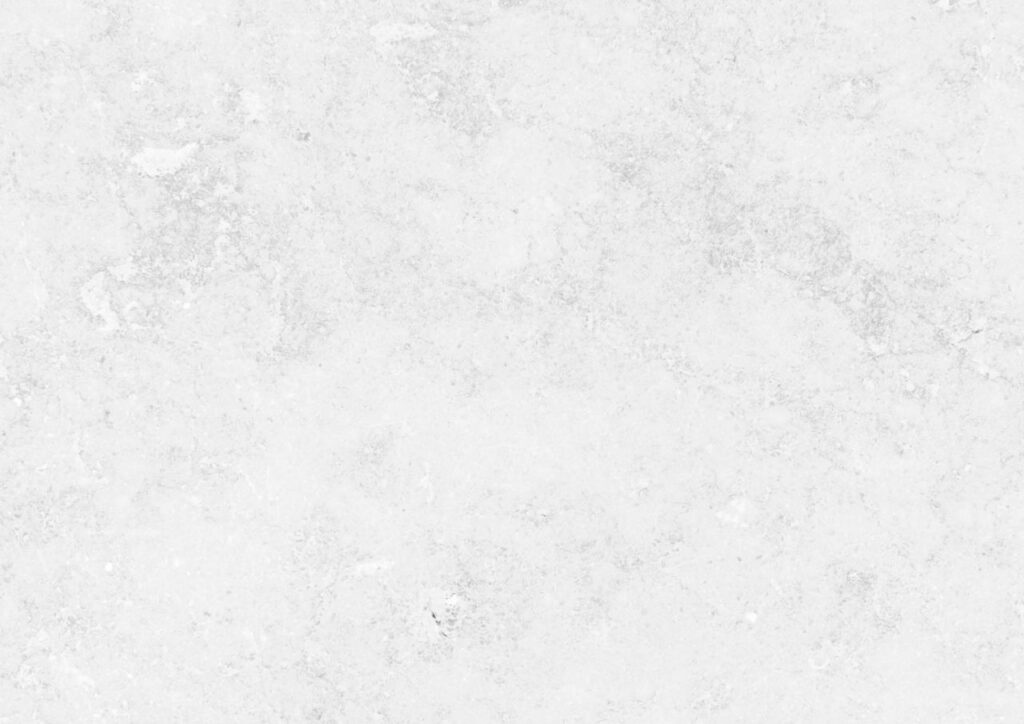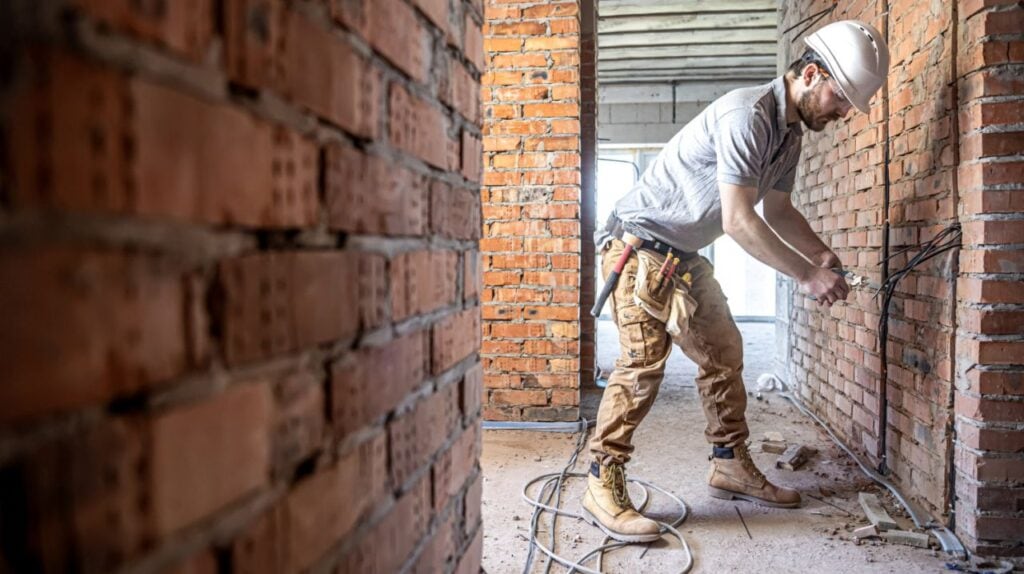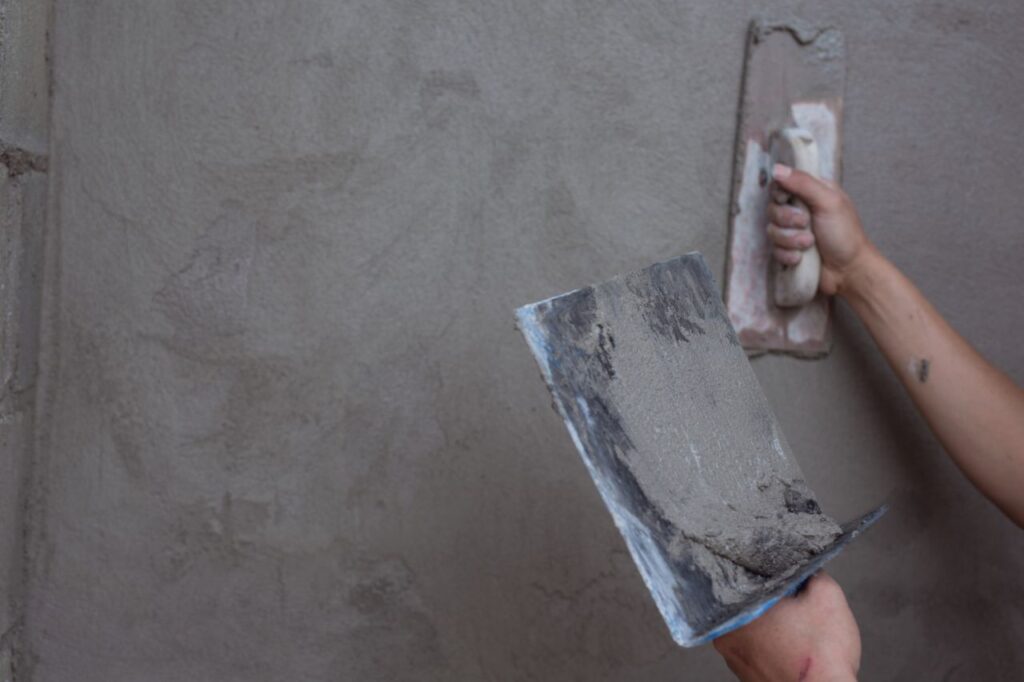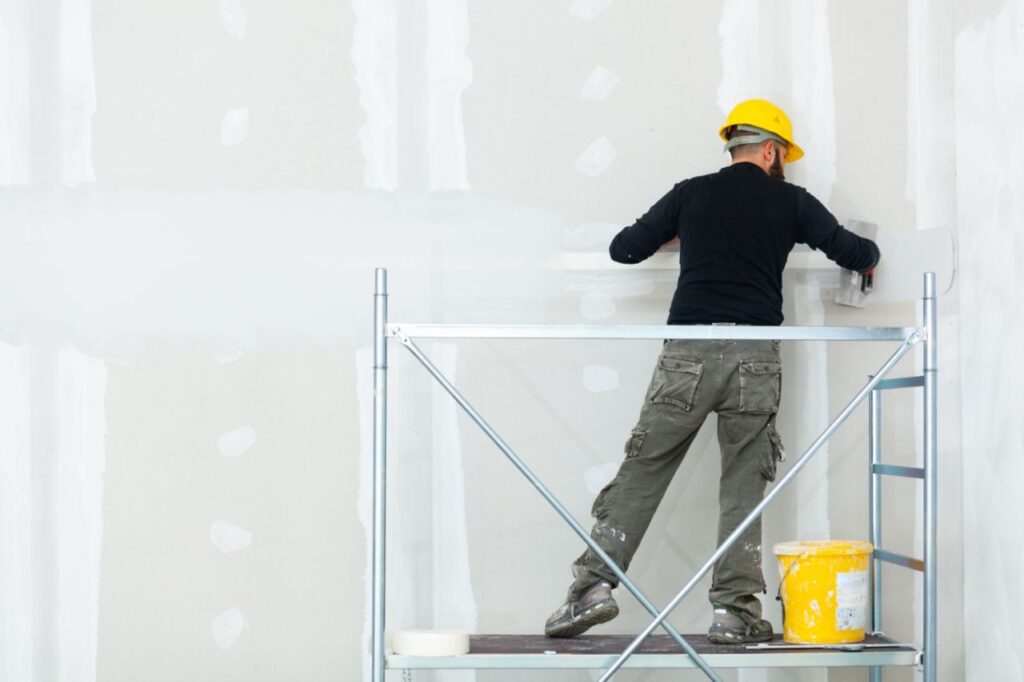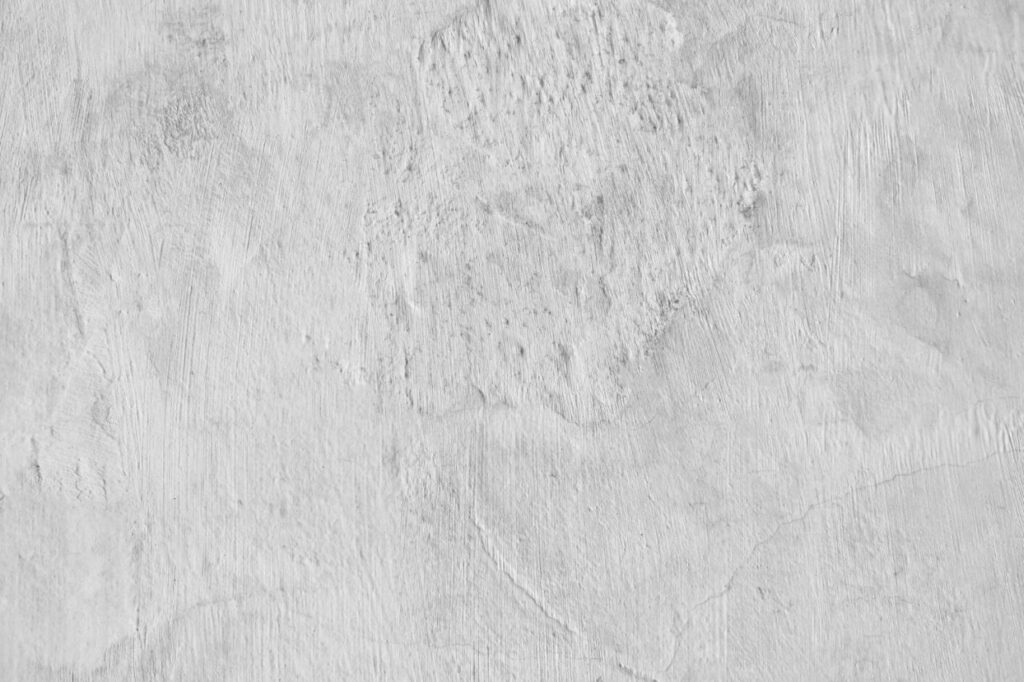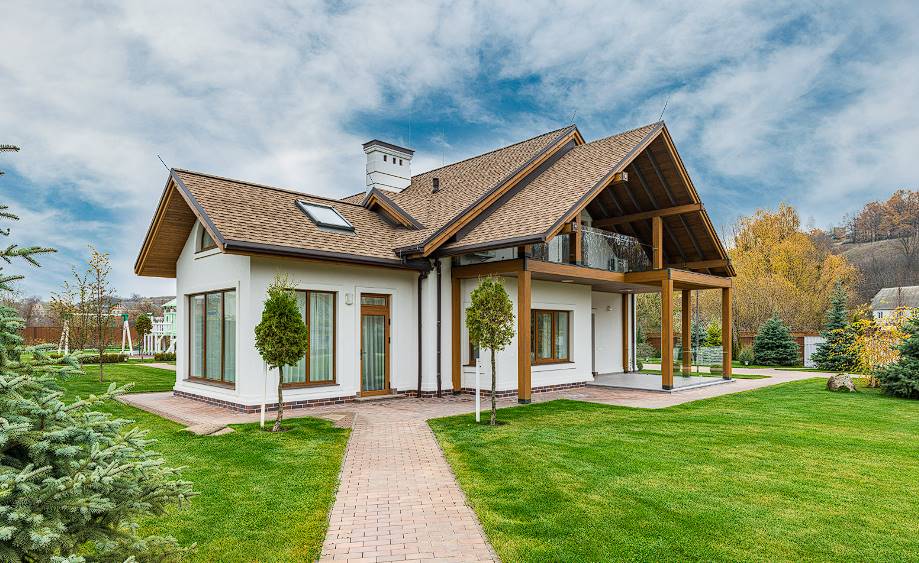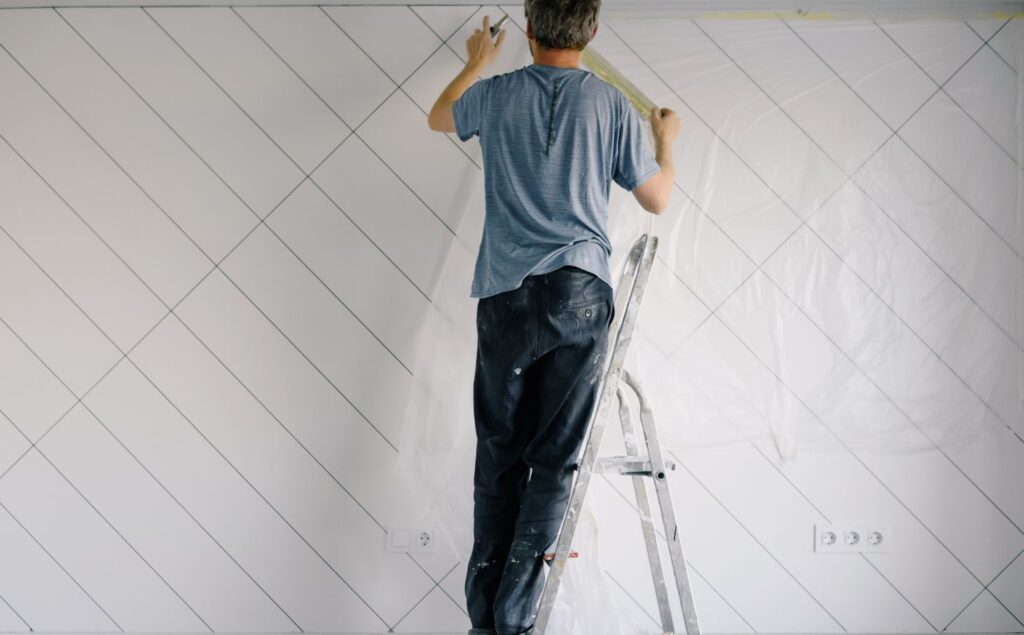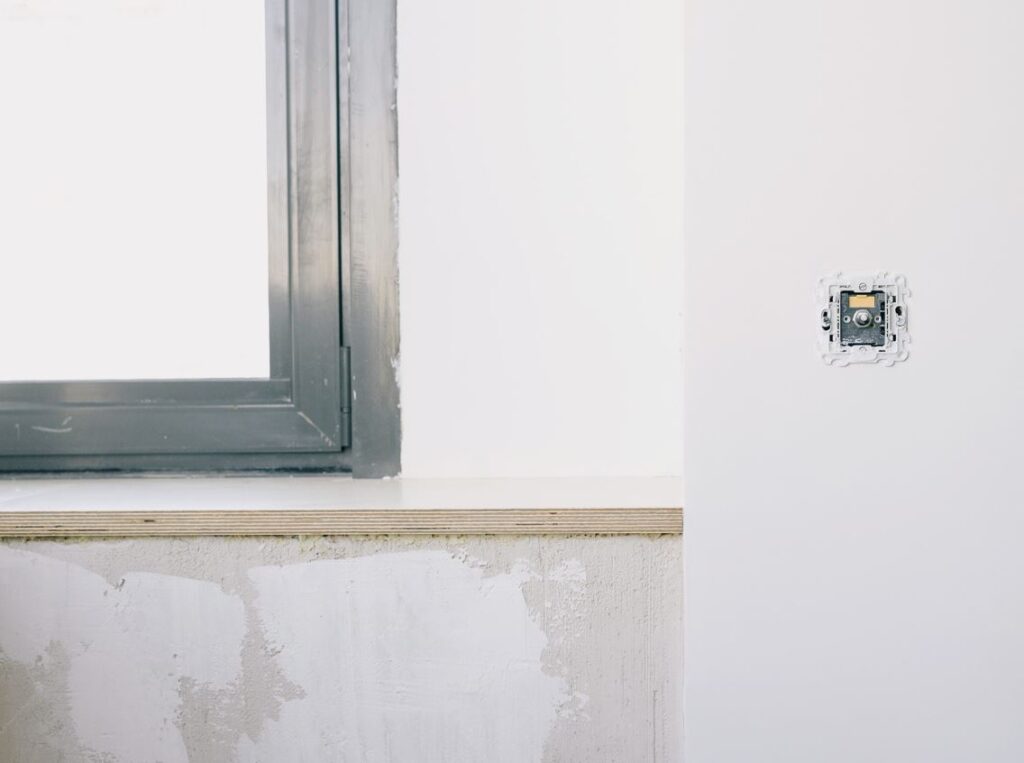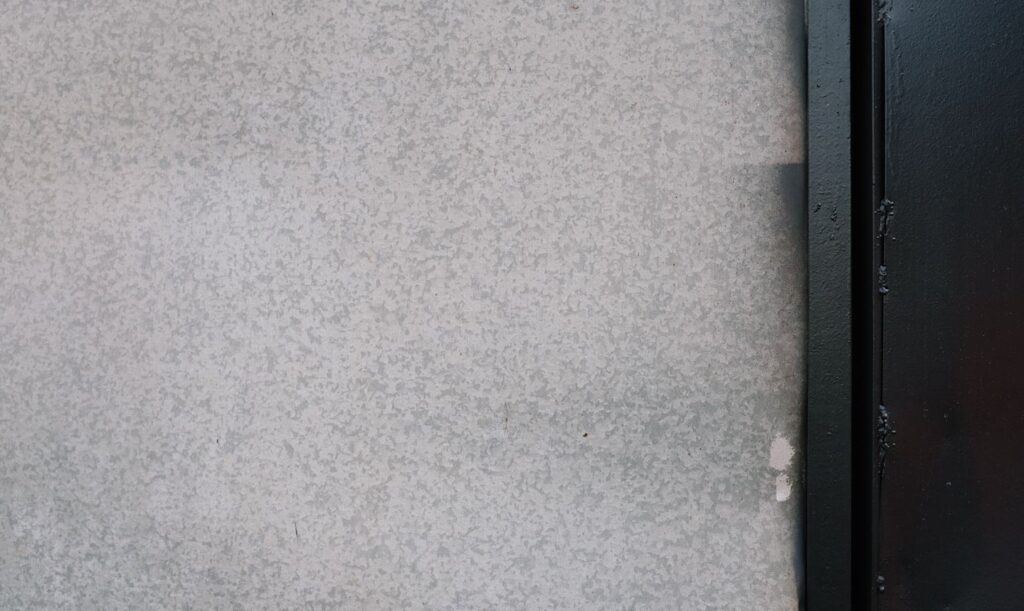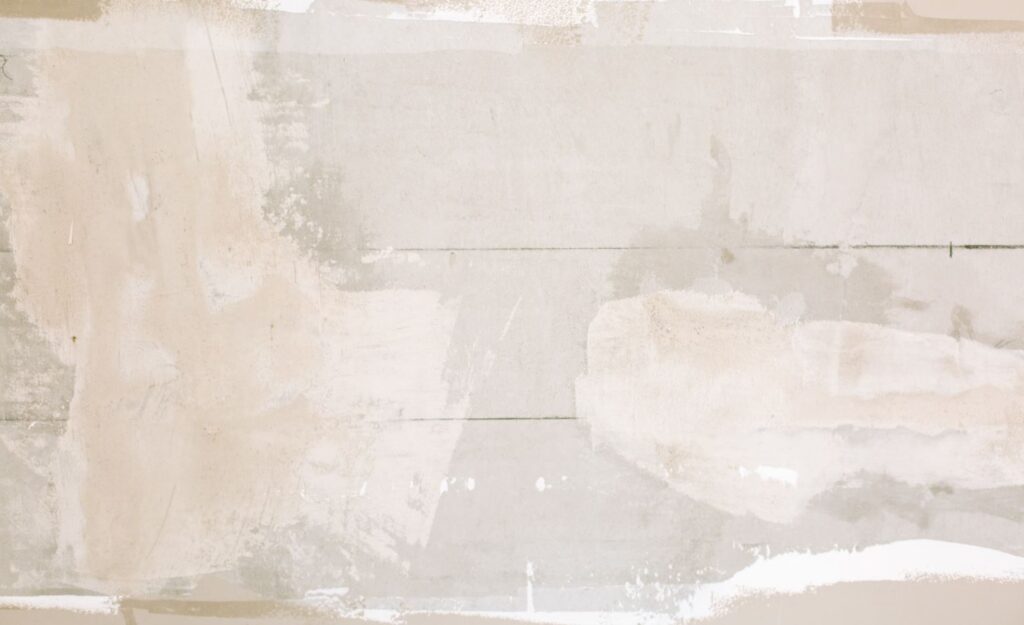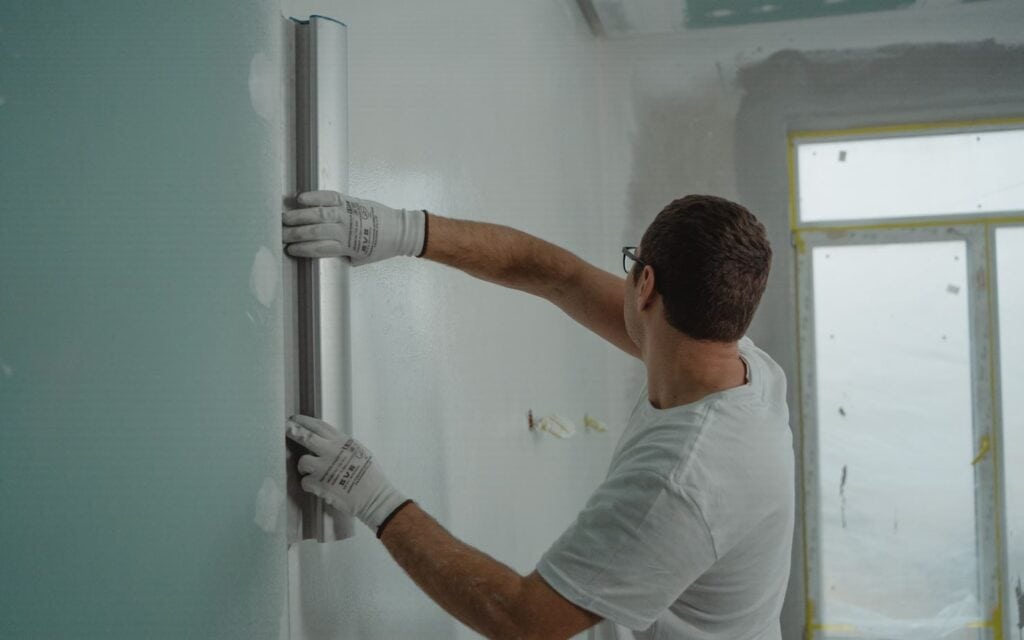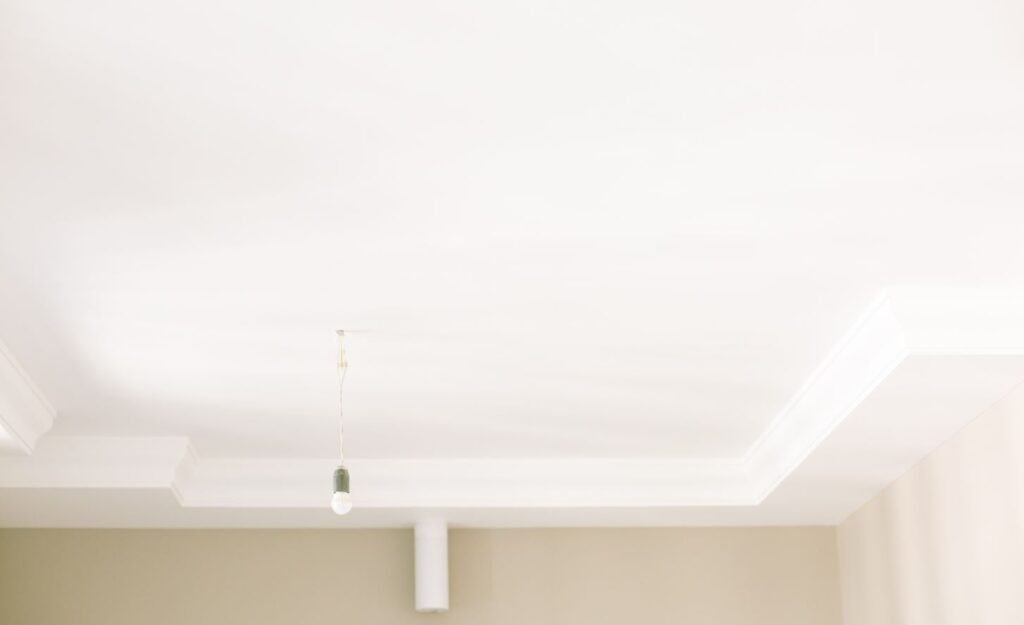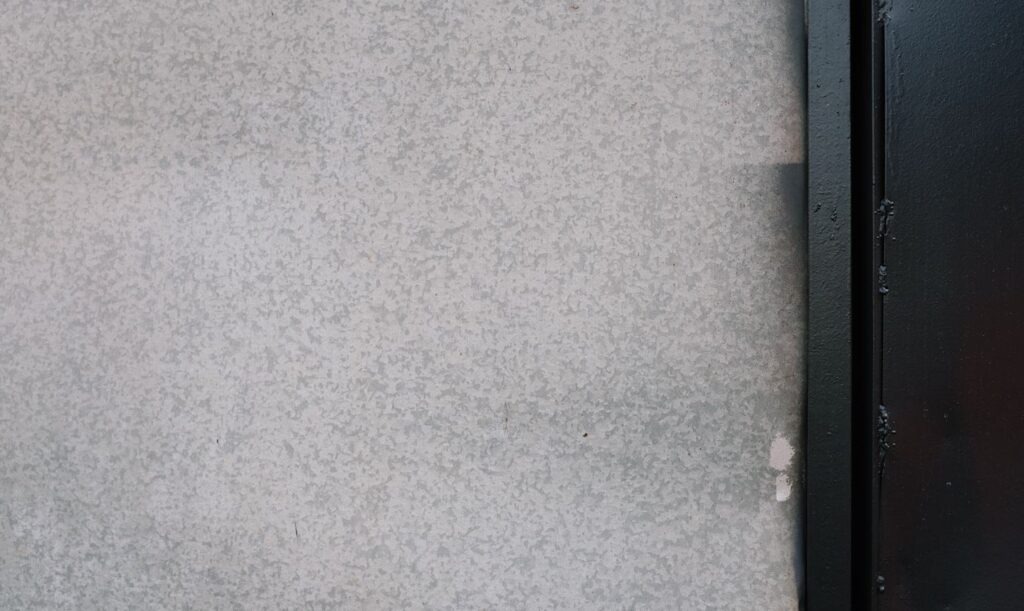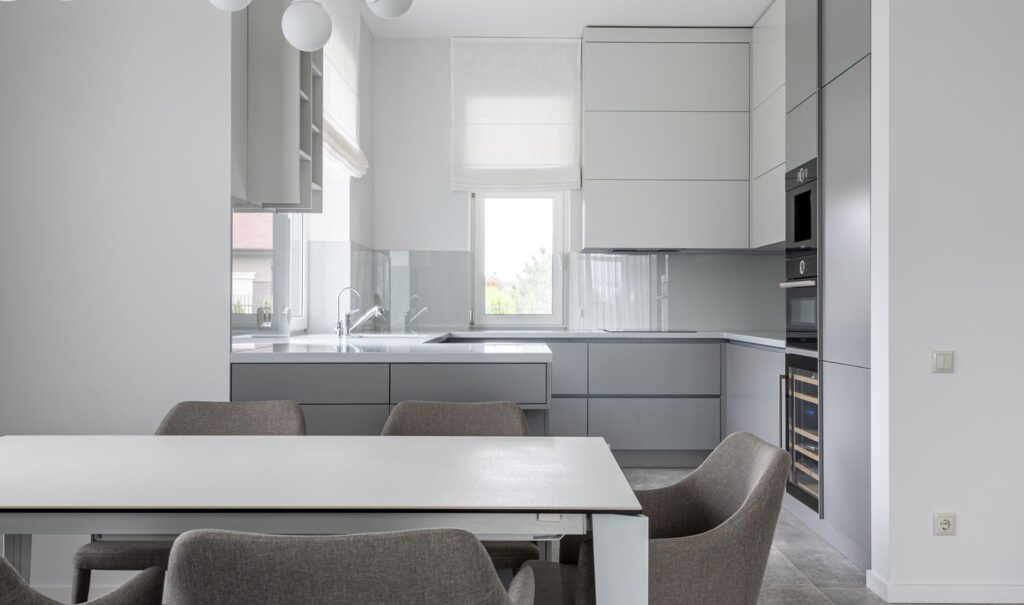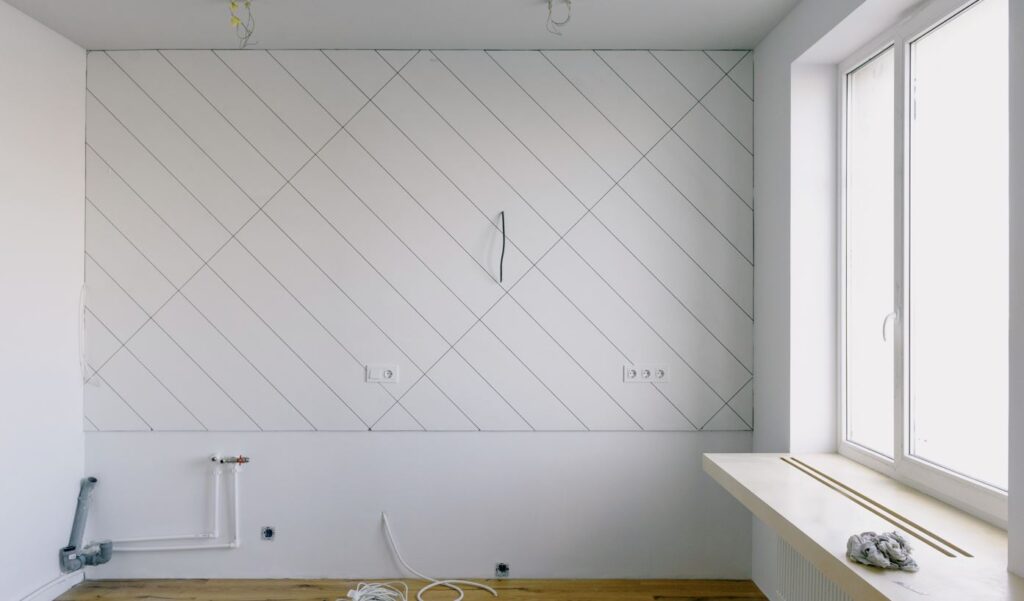Plaster dust, residue, and possible stains can make it difficult to maintain a clean floor after a plastering project is finished. However, taking care of these problems quickly is essential to get your floors to look like new again.
After plastering, the floors must be cleaned thoroughly, and we will demonstrate how to do so here so you get great results every time.
Why Cleaning Floors After Plastering Is Important
After a renovation project, the floors must be cleaned, especially if plaster is used. Let's look at some of the most compelling arguments for giving your floors the care they require:
Keeping Cleanliness And Hygiene
Plastering can leave a mess on the floor from the dust and debris that fall to the ground. Keeping the floors clean after plastering helps get rid of these contaminants, giving you and your family a healthier environment to live in.
Preventing Stains And Damage
Long-term damage can be caused by unattended plaster residue and spills on the floor. For instance, plaster with chemicals or additives could discolour or even corrode the floor surface due to a reaction. Prompt cleaning reduces the likelihood of such damage, protecting your flooring materials and extending their useful life.
Maintaining Floor Aesthetics
The floors in your home may suffer from the residues, dust, and stains left behind from your plastering project. However, it is possible to restore the floors' original beauty and ensure they go well with the freshly plastered walls or ceilings by thoroughly cleaning them.
Cleaning After Plastering: Best Practices
Plastering is a construction trade that involves applying a smooth, even layer of plaster—a substance made from a combination of lime, cement, gypsum, sand, and water—to ceilings, walls, and other surfaces.
Plastering serves multiple purposes: waterproofing, adding aesthetic value, and reinforcing structural qualities. It's a useful procedure, but it tends to get messy. But how do individuals handle their trash?
Here are some suggestions.
Dry Dust
When cleaning up after a plastering project, the methods you use will change depending on the extent of the mess. However, plaster that has dried and hardened should be handled with care. When cleaning up after plastering, the first thing is to clean up all the dust with a dry cloth or a vacuum.
It will lessen the number of floating particles and facilitate easier cleaning. However, dry dusting eliminates the risk of an allergic reaction for those particularly vulnerable to such symptoms.
Floor Scraper
Using a floor scraper to remove any loose plaster is the second step in finishing a plastering job. Meanwhile, it can break off large chunks of stuck material from various surfaces and loosen stuck material.
There is a wide range of floor scrapers to suit your needs. As a result, picking the best candidate is crucial. The scraper must have sufficient reach to access all crevices and remove all calcified debris. Therefore, tidying up is simplified.
Dampened Microfibre
After the surplus plaster has been scraped off, the next step is to clean the area. To clean, use a microfiber cloth that has been dampened with water. The type of fabric is exceptionally absorbent and can gather a lot of grime and dust with little effort.
Moisten the cloth with warm water and a gentle detergent, like dish soap. Then, carefully clean all the plastered areas. It will aid in the cleanup of any stray debris, dust, or plaster that may have been overlooked.
Wet Brush
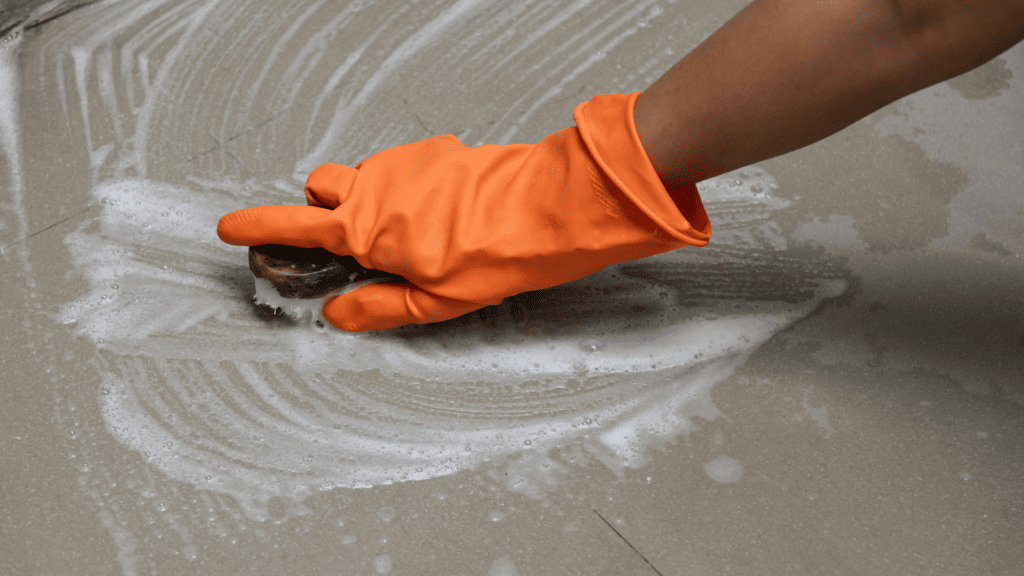
A wet brush should be used after a damp microfiber cloth has been used. The wet brush, just a regular painting brush dipped in water, is meant to help remove any lingering plaster residue that the cloth missed.
Warm water and a gentle detergent should be used to wet the brush. The plastered areas should then be scrubbed with a soft bristle brush. It will be useful for washing away any lingering grime, dust, or plaster. This removes all traces of dried plaster and leaves the surface smooth.
Scrubbing
After the plastering process, the area is scrubbed with a soft-bristled brush. If there is still dirt or dust after using a wet brush, this should help get rid of it. However, scrubbing too harshly can scratch the fresh coat of plaster, so be careful. To clean the area, use gentle strokes of water.
Cleaning Techniques For Different Floor Types
When planning how to clean the floors after plastering, it is important to consider the flooring material you have. To get the best results, clean your floor using the appropriate method for the material.
Let's take a look at how various flooring types should be cleaned:
Clean Plaster Dust Off Wood Floors
Plaster dust on the hardwood floors is normal for an older house. This can be a major hassle to tidy up, but there are straightforward approaches you can take to save time and energy.
Wet The Dust And Soak It In Water.
This is the simplest solution, but it does help. Because of its powdery composition, plaster absorbs water rapidly. Plaster dust can also irritate the respiratory system and trigger allergies if inhaled. Dusty wooden floors can be easily cleaned by mopping them with fresh water.
Make Use Of A Mop.
Plaster can also be removed from wood floors by using a mop. If you see dust piling up, remove some of it with a mop and then mop the entire floor with the right cleaner. The mop will pick up the surplus dirt and help maintain a clean floor.
Dry Compressed Air Is Used To Clean.
Compressed air can also be used for other purposes, such as cleaning the floor. It's very similar to using a vacuum cleaner; the plaster will disappear quickly. A nozzle-equipped pipe must only be connected to the air compressor before activation. The airflow from the vacuum will disperse the dust throughout the room, making it more manageable to collect.
Utilise A Vacuum Cleaner
Plaster dust on wooden floors is much easier to remove with a vacuum cleaner than with compressed air, which only pushes the dirt around instead of sucking it up. Soft brush rolls on vacuum cleaners are ideal for removing dust and dirt from wood floors without harming or damaging the flooring.
Wash The Floor With A Solution Of Water And Soap.
Plaster dust can also be removed from wooden floors by washing them with soap and water or, even better, vinegar and water. To use this method, fill a bucket with clean water and add a mild detergent; if you don't have any mild detergent on hand, white vinegar can also be used as an anti-mildew agent in its place. The antimicrobial and degreasing properties of vinegar have long been recognised. After you're done mopping, give the floor a good rinsing with clean water to get rid of any remaining soap.
Make Use Of A Rubber Broom.
Plaster dust can also be removed from wooden floors using a rubber broom, which has bristles designed to pick up and hold small particles like lampblack, sand, and plaster dust. A rubber broom can be used to sweep the floor, but care must be taken to avoid scratching the finish.
Make Use Of A Steam Cleaner.
Hard surfaces, like floors, can be cleaned of grime, mould, and mildew with a steam cleaner. When cleaning wood floors contaminated by plaster dust, the steam cleaner is highly recommended. The other steps include putting water into the tank and connecting a sponge or soft mop to the machine. Please turn it on, wait a few minutes, and then clean the wood floors with a damp mop or sponge to remove dirt or plaster dust.
Using A Brush, Scrub The Dust Away.
Scrubbing the floor gently with a stiff brush will remove the plaster dust. To prevent larger debris from flying around, sweep the floor with a push broom, and then use a hand brush to remove finer debris like plaster dust. Be careful not to scratch your wood floors by scrubbing them too harshly.
First, Sweep Up The Dust.
Avoid spreading plaster dust by sweeping or vacuuming the floors before mopping. While scrubbing the floors, you can keep the rest of the room relatively dust-free with this.
Allow Them To Completely Dry.
It's important to wait until the wood floors have dried after being cleaned. You can speed up the drying process of the floor by opening windows and doors. It could take several days for your wooden floors to dry if there is a lot of plaster dust on them. Avoid having a slippery floor by keeping them clean.
Clean Plaster Dust From The Tiles
Tiles are impervious to water and dirt, making removal of plaster stains easier than on wood.
Plaster usually washes off glossy surfaces over time, but some stubborn stains may need assistance. Consequently, here is how you can get the plaster off the tiles:
Make A Soap Mixture.
Add two tablespoons of mild dish soap to a bucket of hot water and stir until dissolved.
Scrub The Stain.
Scrub the stain with a sponge. The stain's edges should begin cracking and peeling off as pressure is applied. In time, the spot should thin out and fall off entirely. If it takes too long, it's time to move on.
Put The Stain In Hot Water To Soak.
Soak a cloth in boiling water. Position the cloth over the spill. You can wet the cloth again if you need to. Sponge the area once the stain begins to soften.
Repeat As Necessary.
Removing plaster stains is time-consuming, but the result is worth it when your tiles are restored to their former lustre.
Cleaning Plaster Dust From Laminate Floors
Plaster dust on laminate floors can be difficult to clean up without a proper method. However, if you take a systematic approach, you won't have to worry about merely relocating the dust around the house.
Gear Up
If you have sensitive lungs, breathing in too much dust can lead to stuffy noses, sore throats, coughing fits, and more. Therefore, outfitting oneself with appropriate safety gear, such as goggles and filter masks, is essential.
Obtain The Required Supplies
Taking a systematic approach requires gathering all the materials ahead of time. There's no point in pausing in the middle to try to stock up on supplies.
A broom, a wet and dry vacuum cleaner (though any vacuum will do), a dust mop, and vinegar are the minimum needed to get started.
Sweep
The larger dust particles can be swept away with a broom. You're not sweeping but trying to remove larger dust particles that the vacuum might have trouble sucking up.
Take care not to sweep up too much dirt; the vacuum should do that. Wait 15 to 30 minutes for the dust to settle if it becomes unbearable.
Vacuuming
It's recommended that you use a large-capacity wet/dry vacuum. While a standard vacuum can do the job, plaster dust can damage your vacuum. In addition, the vacuum shouldn't have a filter to keep dirt out, and it also shouldn't have a particularly large container.
If your vacuum has a filter, check it frequently to ensure it is not clogged with debris.
Mop The Floor
You realise that even a thorough vacuuming won't eliminate all the plaster dust, right? So there will inevitably be some lingering dust.
A dry microfiber cloth or dust mop is ideal for cleaning a laminate floor that has become dusty. A dust mop, with its flat head and ability to reach into corners, is ideal for this task. In addition, a vinegar solution can be used to clean the floors.
It's simple to whip up a vinegar-based remedy. 2 cups of white vinegar should be added to five litres of warm water to form the solution. Then, wet a section of the floor at a time with the mop and the cleaning solution.
Effective Floor Cleaning Tips And Tricks
Using Natural Cleaning Products
- Water and Vinegar: Combine equal parts of white vinegar and water for a homemade cleaning solution that is both eco-friendly and efficient. This product is effective on many different flooring materials and helps remove tough residue and stains. However, natural stone floors should not be cleaned with vinegar because it can etch the stone.
- Baking Soda Paste: Make a paste out of baking soda and water. Using a soft brush or cloth, scrub the paste into the stained area of the floor, let it sit for a few minutes, and then rinse. After you're done, please give it a good rinse.
- Lemon Juice: Natural antibacterial properties of lemons make them useful for cleaning and deodorising. Use a solution of equal parts lemon juice and water to disinfect your floors.
Using Proper Cleaning Methods
- Avoid Using Too Much Water: Some flooring materials, like hardwood and laminate, are susceptible to damage from water. Instead of soaking mops or clothes in water, use just enough moisture to do the job.
- Use Microfiber Mops and Cloths: Dust and other particles are easily captured by microfiber materials, making them ideal for floor cleaning. They also serve to scrub the surface softly without damaging it.
- Use soft brushes or pads to scrub: Use non-abrasive scrub pads or brushes with soft bristles on tough stains and grime to prevent scratching the floor. Ensure everything works properly by conducting a test in a hidden area.
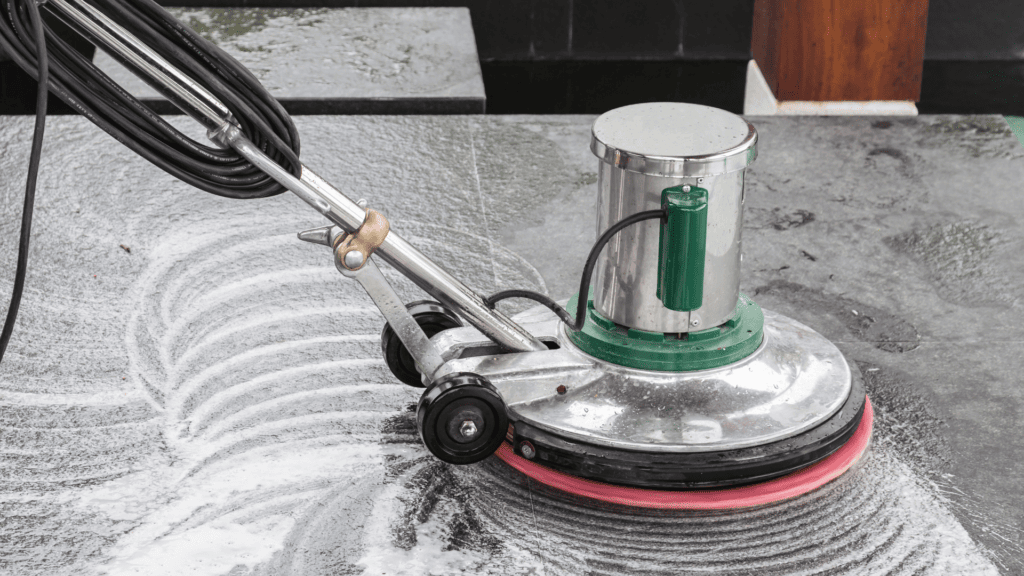
Avoiding Stains And Damage
- Doormats and Rugs: Doormats should be used at all entrances to catch dirt and debris before they can be tracked inside. Rugs should also be used in high-traffic areas to lessen the impact on the floor.
- Wax or Seal Floors: Adding a coat of floor wax or sealant can help safeguard your flooring from damage. There's a better chance that stains, scratches, and water damage won't occur.
- Spills must be cleaned immediately: It's important to clean up accidents immediately so that stains don't become permanent. First, blot the spill with a dry cloth or paper towel, then use the recommended method for your floor.
Conclusion
It is essential to clean floors properly after a plastering process for reasons of cleanliness, hygiene, and aesthetics. It is important to clean up the plaster dust, residue, and stains as soon as possible to maintain a healthy working environment. Maintaining a regular cleaning schedule can help protect flooring from damage and extend its useful life.
Cleaning up after plastering with a dry towel or vacuum will remove dust and minimise the risk of allergic responses. Use a floor scraper to chip away at stubborn bits of plaster and remove it entirely. You can wipe the surface down with a damp microfiber towel, and if any plaster dust or debris remains, a wet brush will do the trick. To clean the area, use a soft bristles brush, taking care not to harm the new plaster.
To get the greatest results while cleaning floors after plastering, it's important to think about the flooring type and employ the proper cleaning techniques for the material. Remember to use the proper procedures for each floor material to achieve the best possible results. If you have plaster dust on your hardwood floors, simply moisten the dust and let it soak in water. Mopping the floor with clean water and a mop helps reduce the amount of dust and filth on it. You can also clean the floor with dry compressed air, as it swiftly disperses the dust.
Plaster dust can be safely and easily vacuumed up without risk to the flooring. Carefully mop the floor with a mix of water and soap, taking care not to harm the finish. It is possible to collect and store smaller particles, such as lampblack, sand, and plaster dust, with the use of a rubber broom. When tackling the cleanup of hard floors polluted with plaster dust, a steam cleaner comes highly recommended.
Make a soap combination, scrape the stain with a sponge, and soak it in hot water to remove plaster dust from the tiles. As often as required. Although cleaning plaster dust from tiles is a time-consuming process, the results are well worth it.
Plaster dust must be removed from laminate floors in a methodical manner. Get out the broom, the dust mop, the vinegar, and the wet and dry vacuum cleaners. First, use a broom to collect the larger dust particles, then wait 15 to 30 minutes for the dust to settle before vacuuming. It is important to regularly inspect the filter of your vacuum to prevent it from becoming clogged.
To remove the dust from a laminate floor, use a dry microfiber cloth or dust mop. A dust mop with a flat head and long handle will do the job here. Cleaning floors with a vinegar solution is another option. Two cups of white vinegar added to five litres of warm water yields a vinegar-based solution. This effective and eco-friendly method can clean stubborn residue and stains from a wide range of flooring types.
However, vinegar is not a good choice for cleaning natural stone flooring because it might scratch the stone. To disinfect flooring, you can use either lemon juice or a paste formed from baking soda and water. Applying floor wax or sealer, clearing spills immediately, utilising doormats and rugs, avoiding stains and damage, and using just the right amount of moisture is all part of a well-maintained floor.
Content Summary
- Cleaning floors after plastering is essential to restore their original appearance.
- Plastering can leave dust, debris, and stains on the floor.
- Cleaning floors after plastering promotes cleanliness and hygiene.
- Unattended plaster residue can cause long-term damage to floors.
- Prompt cleaning after plastering extends the life of flooring materials.
- Thoroughly cleaning floors after plastering enhances their aesthetics.
- Plastering involves applying a smooth layer of plaster to surfaces.
- Dry dusting with a cloth or vacuum is the first step in cleaning after plastering.
- A floor scraper helps remove loose plaster and stuck material from surfaces.
- Dampening a microfiber cloth with water aids in cleaning plastered areas.
- A wet brush is used to remove lingering plaster residue.
- Scrubbing with a soft-bristled brush cleans the area after wet brushing.
- Different cleaning techniques should be used based on the type of flooring.
- Plaster dust on wood floors can be wetted and mopped for easy removal.
- Using a mop helps remove plaster from wood floors.
- Compressed air can be used to clean plaster dust from wood floors.
- Vacuum cleaners with soft brush rolls are suitable for cleaning wood floors.
- Washing wood floors with a water and soap solution effectively removes plaster dust.
- Rubber brooms can be used to sweep wood floors and collect small particles.
- Steam cleaners are recommended for cleaning wood floors contaminated by plaster dust.
- Scrubbing wood floors with a stiff brush helps remove plaster dust.
- Sweeping and vacuuming are essential before mopping wood floors.
- Allowing wood floors to dry completely after cleaning is important.
- Tiles are easier to clean from plaster stains than wood floors.
- Making a soap mixture and scrubbing with a sponge helps remove plaster stains from tiles.
- Soaking a cloth in hot water and placing it on the stain aids in softening it.
- Removing plaster stains from tiles may require repeating the process.
- Cleaning plaster dust from laminate floors requires proper method and equipment.
- Wearing safety gear like goggles and filter masks is important when cleaning plaster dust from laminate floors.
- Sweeping with a broom helps remove larger dust particles from laminate floors.
- Vacuuming with a wet/dry vacuum cleaner effectively cleans plaster dust from laminate floors.
- Using a dust mop or microfiber cloth with a vinegar solution is ideal for cleaning dusty laminate floors.
- Natural cleaning products like water and vinegar, baking soda paste, and lemon juice are effective for floor cleaning.
- Using proper cleaning methods helps prevent damage to the floor.
- Avoiding excessive water use is crucial for floors prone to water damage.
- Microfiber mops and cloths are effective in capturing dust and particles during floor cleaning.
- Soft brushes or pads should be used to scrub tough stains on floors.
- Doormats and rugs can help prevent dirt and debris from entering and damaging the floor.
- Applying floor wax or sealant adds protection to the flooring.
- Promptly cleaning spills prevents stains from becoming permanent.
- The content provides step-by-step instructions for cleaning different floor types.
- The importance of maintaining cleanliness and hygiene after a renovation project is highlighted.
- The potential damage caused by unattended plaster residue is emphasized.
- The goal of cleaning after plastering is to restore the floors' original beauty.
- The content provides specific cleaning techniques for wood, tile, and laminate floors.
- It recommends using appropriate cleaning tools and materials for each floor type.
- The use of natural cleaning products is encouraged.
Frequently Asked Questions About Plastering
Yes, you can clean your floors immediately after plastering. However, using the appropriate cleaning methods and tools is important to avoid damaging the freshly applied plaster.
Hiring professional cleaners after plastering is unnecessary, but it can be beneficial, especially if you prefer to leave the task to experts with post-construction cleaning experience.
Yes, you can use bleach to remove plaster stains from your floor. However, it is important to exercise caution and dilute the bleach properly according to the manufacturer's instructions. Test a small, inconspicuous area first to ensure it does not cause discolouration or damage to your flooring material.
When cleaning after plastering, it is important to take the following safety precautions:
- Wear Protective Gear: Wear gloves, safety goggles, and a dust mask to protect yourself from dust, debris, and cleaning chemicals.
- Ventilate the Area: Open windows and use fans to ensure proper ventilation and minimise the inhalation of dust and fumes.
- Use Non-Slip Shoes: Wear shoes with a good grip to prevent slipping on damp surfaces.
- Avoid Bare Skin Contact: Avoid direct skin contact with cleaning solutions or chemicals by wearing long sleeves and pants.
- Follow Instructions: Read and follow the instructions on cleaning products carefully to ensure safe and effective use.
- Keep Children and Pets Away: Restrict access to the cleaning area to prevent accidents and exposure to potentially harmful substances.
By taking these safety precautions, you can minimise risks and ensure a safe cleaning process after plastering.
After plastering, it is recommended to clean your floors thoroughly once immediately after the plastering process is completed. This will help remove any plaster residue, dust, or debris that may have settled on the floor. After the initial cleaning, you can maintain regular floor cleaning practices based on your usual cleaning routine and the specific needs of your floors. Generally, it is advisable to clean floors regularly, such as weekly or bi-weekly, to keep them clean and well-maintained.

